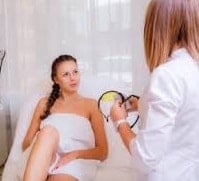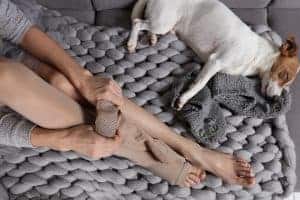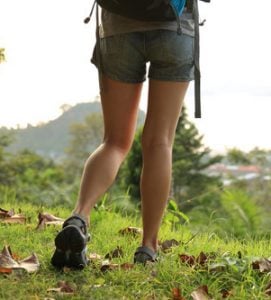
What Can I do to Prevent Varicose Veins from Developing?
There are several factors that can put individuals at risk of developing varicose veins. While you may be able to alter some of these factors, others are beyond your control.
The truth is that there may not be much you can do in the end to avoid getting varicose veins. But that doesn’t mean that you can’t postpone their maturation or lessen their severity.
There are 4 important steps to help prevent varicose veins.

- Avoid being overweight.
By maintaining a healthy weight you can limit your risk of developing vein issues. Additional weight means increased pressure on your veins leading to weakened vein walls and valves. These are the two biggest causes of varicose veins. - Wear Compression Hose.
Compression garments will support the veins in your legs, making them more efficient at pumping the blood on its journey back to the heart. Without this added support, blood can pool in the lower extremities, building pressure, and causing varicose veins. This is particularly important if you stand for long periods of time. Learn more about compression therapy here. - Avoid standing for extended periods of time. If you must stand for work or another reason, make sure to take frequent breaks and sit down. You should elevate your legs whenever possible when sitting. On the other hand, if you sit for hours on end, stretch out your legs, or even better, stand up every 90 minutes.
- Work out regularly. Regular exercise will strengthen the legs and improve the circulatory system.
Can varicose veins cause pain or discomfort?
Yes, varicose veins can cause pain and discomfort. Common symptoms include aching, throbbing, or cramping in the legs, especially after prolonged periods of standing or sitting. There can also be itching, burning sensations, and swelling. In some cases, varicose veins can lead to more severe pain and skin changes like ulcers or inflammation.
How does aging affect the development of varicose veins?
Aging can affect the development of varicose veins in several ways:
- Loss of Elasticity: As people age, the walls of the veins can lose their natural elasticity. This can cause the veins to weaken and enlarge, leading to varicose veins.
- Weakening of Valves: Veins have one-way valves that help blood flow toward the heart and prevent it from flowing backward. With age, these valves can weaken, allowing blood to pool in the veins and leading to the development of varicose veins.
- Thinning of Skin: Aging can cause the skin to become thinner and less elastic. Thinner skin can make veins more visible and increase the likelihood of varicose veins becoming noticeable.
When varicose veins aren’t preventable?
There are certain scenarios and situations where varicose veins aren’t preventable, these can be caused by factors that aren’t even in your control, here are some of them:
1. Genetics: Genetics is the most obvious factor here, since it’s something literally impossible to control no matter what. If your family has a history of varicose veins, for example if your parents or grandparents often suffered from this problem then there are chances, you might too!
2. Age: As we get older, our vein walls get weaker and weaker, which makes it much easier for them to get damaged, or stop circulating blood properly, which highly increases the chances of varicose veins. Aging is natural, there’s nothing you can do about it sadly.
3. Hormonal Changes: Hormonal fluctuations are common in women, these can happen during pregnancy, puberty, menopause or when taking hormone based medications like birth control pills, all these hormonal changes can weaken your vein walls and valves, which leads to varicose veins. Again, all of these are natural, so there’s nothing you can do about them sadly.
4. Pregnancy: Pregnancy is one of the most popular causes of varicose veins, thanks to the increased blood volume and pressure, increase weight which makes it harder for blood to circulate through lower body and hormonal changes.
5. Gender: As mentioned earlier, women go through multiple hormonal fluctuations, which makes then much more prone to varicose veins than men.
6. Injuries or Trauma: You never know when you might get injured, and if those se injuries are on legs, then there are chances your veins might have got damaged, which leads to varicose veins. While it’s impossible to avoid all accidents and injuries, you can still prevent many by being careful enough.
7. Prolonged Sitting Or Standing: Certain jobs can require sitting or standing fir too long which can be easily dealt with small breaks!
Is there a permanent solution for varicose veins?
There are several medical procedures available for treating varicose veins, but it’s important to note that while these treatments can significantly improve the appearance and symptoms of varicose veins, they may not always provide a permanent solution. The effectiveness of the treatments can vary based on the severity of the condition and individual factors. Some common medical treatments include:
- Endovenous Laser Treatment (EVLT): This procedure uses laser energy to close off varicose veins, redirecting blood flow to healthier veins.
- Radiofrequency Ablation (RFA): RFA uses radiofrequency energy to heat and seal off varicose veins, allowing blood to be rerouted through healthier veins.
- Sclerotherapy: A chemical solution is injected into the affected veins, causing them to collapse and eventually fade away.

If you already have varicose veins, we can help!
